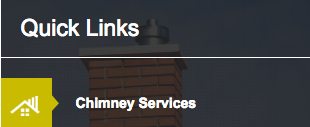Springtime is officially here! Though we probably haven’t yet seen the last of winter weather, we can all start to look forward to warmer afternoons, blooming wildflowers, and an increase in animal activity. Birds become particularly lively this time of year: their quests to find mates and produce offspring often drive them to sing, fly, and gather resources with extra gusto!
Unfortunately, flurries of avian activity can lead to an increase in bird infestations. Birds instinctively look for safe, sheltered places to live and build nests, and in their minds, the attics and chimneys of human homes are prime real estate. Most folks love to hear the sounds of songbirds coming from their yards or local greenbelts, but chattering and fluttering sounds inside your home should be cause for concern.

Is it really so bad to have wild birds move in with you? And how do you get rid of them, anyway? Read on for the answers to these questions, and more!
Free Birds
Last year, we discussed chimney swifts—a migratory bird that’s relatively infamous for nesting in chimneys. And because chimney swifts are considered a federally protected species (thanks, Migratory Bird Treaty Act of 1918!), once these swifts “set up shop” on your property, it’s illegal to trap or relocate them. If you hear a chirping noise coming from your chimney and the source is discovered to be a family of chimney swifts, there’s not much you can do except wait for them to leave on their own. Listening to them go about their business for two or three weeks will probably be annoying, but for many folks, doing so is preferable to risking the $15,000 fine and possible prison sentence associated with breaking the law.
Now, chimney swifts aren’t the only bird species that like to build nests inside man-made structures. They’re also not the only protected bird species that can’t be removed after they settle somewhere. But a few types of pest birds are not protected. Pigeons, European starlings, and house sparrows are commonly found inside in chimneys and attics, and they can all be evicted with little fanfare.
If you have reason to suspect that your home is infested with birds, please don’t assume that you just have to “wait out” the problem. Call a licensed wildlife removal specialist and have them make a professional assessment. You may be surprised at how quick and easy it is to remedy the situation.
Get Out…
Let’s be clear: a cruelty-free wildlife removal service will not use poisons or otherwise harm the birds in order to relocate them. Popular non-violent techniques include:
1. Trapping the birds with humane cages.
In most cases, this involves baiting the cage with food and allowing the birds to wander inside on their own. Trying to actively “shepherd” wild birds into cages is usually very difficult for humans and extremely stressful for the birds involved, so a more passive approach is definitely preferable!
2. Annoying the birds into leaving by blasting loud music in their general direction.
Alternatively, technicians will sometimes play recordings of native predatory birds (e.g., hawks) or sounds of pest birds in distress; the main point is to get the startled birds to vacate the premises “temporarily” and then prevent them from getting back inside. More on that in a moment!
3. Setting up an exclusion door at the birds’ main entry point.
An exclusion door is simply an opening that can be accessed from one side but not the other. Once the technician figures out how the birds are coming and going into your home, they can attach a cage or build a structure at the entry point that will allow birds to leave while barring reentry.
Now, most birds have a homing instinct, which means that they can often find their way back to their nest even if they’re physically transported elsewhere. And like all other infestations, bird problems may reoccur if you don’t get to the root of the issue. That’s why getting the pests out of your house is only half the battle!
…and Stay Out
A wildlife removal service should include an investigation as to how the birds got into your home in the first place. The most common entry points for avian intruders are:
- Small holes in your home’s roof or wall sliding.
- Exhaust vents.
- Uncapped chimneys.
When the technician discovers the source of the breach, they’ll advise you on a plan of action for preventing problems in the future. This might be as simple as plugging or patching holes in your house’s walls or as complex as having a cap installed on your chimney.
The final step in the process is a matter of health and safety: sanitation and deodorization. Bird feces can transmit histoplasmosis, cryptococcosis, salmonella, and other potentially fatal diseases to humans, and their feathers can be vehicles for mites, ticks, and allergy-triggering dander. Intact birds’ nests left inside walls or chimneys are also a fairly serious fire hazard. The scene of the infestation must be cleaned up once the birds are gone, lest you “enjoy” a parting gift of bad smells, vermin, and/or health issues long after the fact!
Sometimes, cleanup jobs just require simple scrubbing with specialized tools and chemicals. Other times, it may be necessary to remove and replace attic insulation. Your technician will—once again—be able to advise you on the best course of action to take.
Though wild birds are pretty to look at and fun to listen to, they’re best appreciated at a safe distance. And because removing certain bird species from your home might land you in legal trouble, it’s much better to keep them out completely than to deal with an infestation. The good news is that Chimney and Wildlife Specialists can help in either situation. Contact us today for help with bird-proofing your property…or making some feathery squatters “fly the coop!”






